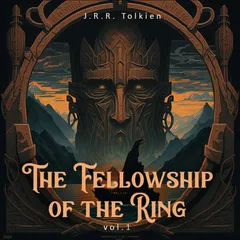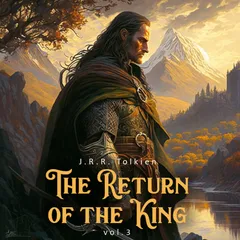J.R.R. Tolkien
Ah, the world of J.R.R. Tolkien – one where hobbits dwell in comfortable burrows, elves thread light-footed through emerald forests, and the echoes of dragon roars reverberate off mountain peaks.
Born John Ronald Reuel Tolkien on January 3, 1892, in Bloemfontein, South Africa, this prodigious storyteller was destined to kindle a beacon of fantasy literature that would illuminate generations. From a young age, Tolkien's world was one of words and languages. His mother, Mabel, home-schooled him and his brother, kindling an early love for languages, mythology, and fairy tales.
However, his childhood was steeped in hardship. Orphaned at 12, it was the Catholic Church, specifically Father Francis Morgan, who offered support and solace. Oxford became Tolkien's playground, where he first tasted the romance of academia. He studied Classics, then English Language and Literature, with an insatiable appetite for Old Norse and Finnish languages. It was at Oxford, within the hallowed walls of Exeter College, that Middle-Earth began to take shape.
In 1916, amidst the tumult of World War I, Tolkien was called to the frontline. The horror of war was seared into his psyche, later erupting in the epic battles of Middle-Earth. Post-war, he returned to academia, eventually becoming a professor at Oxford, a post he held for 34 years.
Tolkien's most acclaimed works, "The Hobbit" and "The Lord of the Rings" trilogy, are not merely stories, but entire universes, painted with intricate detail. The tales, filled with heroic quests and vivid characters, are underpinned by a deep exploration of themes like friendship, courage, and sacrifice. These masterpieces reshaped fantasy literature, presenting a profound blend of myth, history, and linguistics.
A devout Catholic, Tolkien's faith subtly influenced his narratives, often addressing themes of sin, redemption, and the struggle for good against evil. His friendship with C.S. Lewis, another literary colossus, was also significant. Their friendship, often nurtured over shared pints at The Eagle and Child pub, bore fruit in their respective literary universes.
Beyond his literary prowess, Tolkien was a keen botanist with a particular affection for trees, a passion reflected in the Ents of Middle-Earth. He was also a gifted artist, creating beautiful illustrations for his books.
Tolkien's journey concluded on September 2, 1973. Yet, his tales continue to echo through time, uniting a fellowship of readers across the world. He showed us that even the smallest person can change the course of the future, and therein lies the enduring magic of his legacy. Tolkien's life – an epic tale in itself – is a testament to the power of imagination and the potency of language!
Read more on Wikipedia







